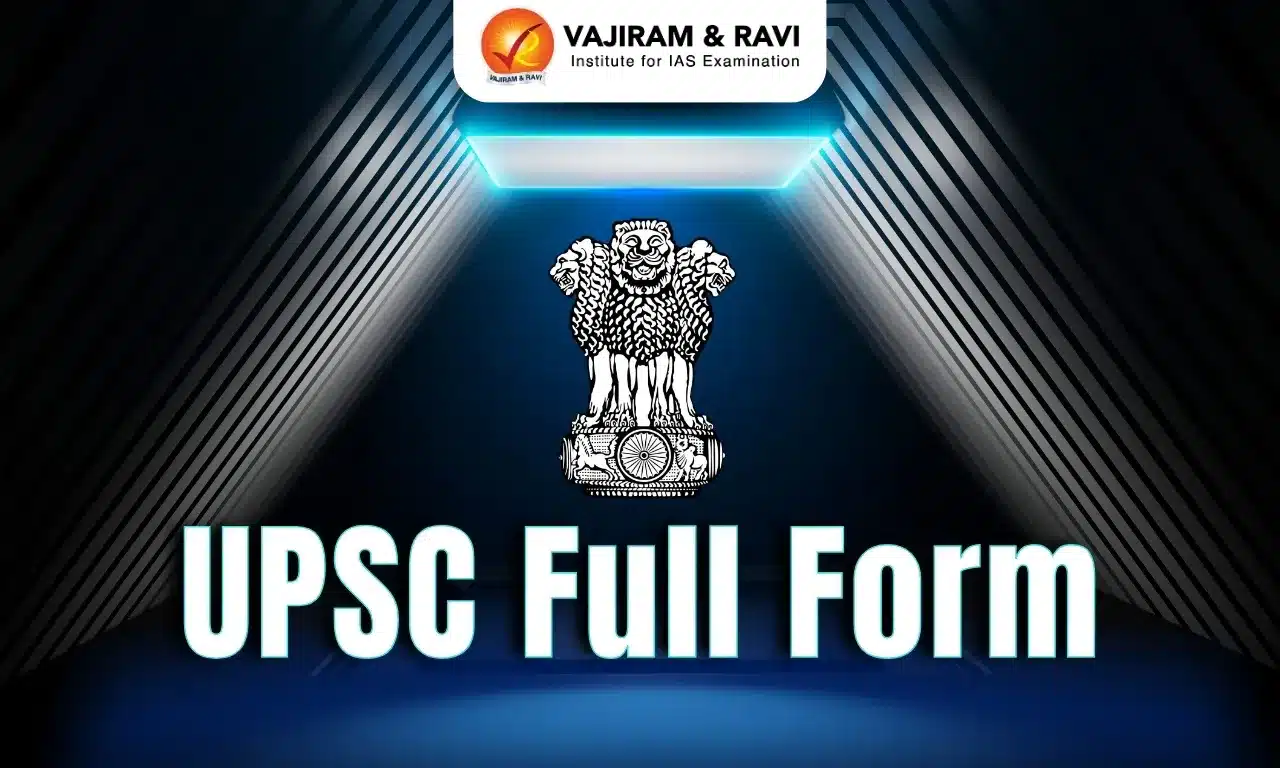The UPSC Chemistry Syllabus for Mains is meticulously designed to assess candidates' in-depth knowledge and analytical skills in the field of chemistry. This syllabus is divided into two papers, each covering distinct aspects of the subject. Paper 1 focuses on physical and inorganic chemistry, while Paper 2 deals with organic chemistry. To excel, candidates must thoroughly understand each section, integrate fundamental concepts, and apply their knowledge to solve complex problems. Comprehensive preparation and strategic study are crucial for mastering the syllabus and achieving a high score in the UPSC Mains examination.
UPSC Chemistry Optional Syllabus
The UPSC Civil Services Mains Exam includes Chemistry as an optional subject, divided into two papers: Paper I and Paper II. The syllabus encompasses a broad spectrum of topics from Physical, Organic, and Inorganic Chemistry, reflecting the essential knowledge needed in scientific and technological contexts, as well as environmental issues. This subject not only deepens understanding in these areas but also enhances preparation for General Studies, particularly in topics related to science and technology, environmental conservation, and the impact of scientific progress on economic development.
UPSC Chemistry Syllabus for Paper 1
Paper 1 of the UPSC Chemistry syllabus focuses on Physical Chemistry, covering topics such as Thermodynamics, Quantum Chemistry, and Chemical Kinetics. It emphasizes fundamental principles and theories essential for understanding chemical processes and reactions.
| Topic | Details |
| Atomic Structure | Heisenberg’s uncertainty principle, Schrödinger wave equation, quantum numbers, hydrogen atom wave functions, shapes of s, p, and d orbitals. |
| Chemical Bonding | Ionic bonds, lattice energy, Born-Haber cycle, covalent bonds, polarities, resonance, molecular orbital theory, bond order, strength, and length. |
| Solid State | Crystal systems, lattice structures, Bragg’s law, X-ray diffraction, close packing, radius ratio rules, structures of NaCl, ZnS, CsCl, CaF2, defects, and semiconductors. |
| Gaseous State and Transport Phenomenon | Equation of state for real gases, intermolecular interactions, critical phenomena, Maxwell’s distribution, thermal conductivity, and viscosity. |
| Liquid State | Kelvin equation, surface tension, surface energy, wetting, contact angle, interfacial tension, and capillary action. |
| Thermodynamics | First and second laws, entropy, free energy functions, Maxwell relations, temperature, volume, pressure dependence, J-T effect, equilibrium, and Nernst heat theorem. |
| Phase Equilibria and Solutions | Clausius-Clapeyron equation, phase diagram, binary systems, partial molar quantities, excess thermodynamic functions. |
| Electrochemistry | Debye-Hückel theory, galvanic and concentration cells, electrochemical series, electrode processes, rate of charge transfer, electroanalytical techniques. |
| Chemical Kinetics | Rate equations for various orders, reactions, temperature and pressure effects, fast reaction methods, collisions, and transition state theories. |
| Photochemistry | Light absorption, decay of excited states, photochemical reactions, quantum yields. |
| Surface Phenomena and Catalysis | Adsorption isotherms, surface area determination, reaction mechanisms on heterogeneous catalysts. |
| Bioinorganic Chemistry | Metal ions in biological systems, ion-transport, oxygen-uptake proteins, cytochromes, and ferredoxins. |
| Coordination Chemistry | Bonding theories, isomerism, nomenclature, stereochemistry, chelate effect, trans effect, substitution reactions, stability, metal carbonyls, and metal-aromatic complexes. |
| Main Group Chemistry | Boranes, borazines, phosphazenes, silicates, silicones, interhalogen compounds, sulfur-nitrogen compounds, noble gas compounds. |
| General Chemistry of ‘f’ Block Elements | Lanthanides and actinides: separation, oxidation states, magnetic and spectral properties, lanthanide contraction. |
UPSC Chemistry Syllabus for Paper 2
Paper 2 of the UPSC Chemistry syllabus deals with Organic and Inorganic Chemistry, including the study of Organic Reaction Mechanisms, Coordination Chemistry, and Transition Metals. It integrates the study of organic compounds and inorganic substances, with a focus on their applications and properties.
| Topic | Details |
| Atomic Structure | Heisenberg’s uncertainty principle, Schrödinger wave equation (time independent), wave function interpretation, particle in a one-dimensional box, quantum numbers, hydrogen atom wave functions, shapes of s, p, and d orbitals. |
| Chemical Bonding | Ionic bonds, characteristics of ionic compounds, lattice energy, Born-Haber cycle, covalent bonds, bond polarities, valence bond theory, resonance, molecular orbital theory (LCAO method), bond order, strength, and length. |
| Solid State | Crystal systems, lattice structures, unit cell, Bragg’s law, X-ray diffraction, close packing, radius ratio rules, structures of NaCl, ZnS, CsCl, CaF2, stoichiometric and nonstoichiometric defects, impurity defects, semiconductors. |
| Gaseous State and Transport Phenomenon | Equation of state for real gases, intermolecular interactions, critical phenomena, liquefaction of gases, Maxwell’s distribution of speeds, intermolecular collisions, collisions on the wall, effusion, thermal conductivity, viscosity of ideal gases. |
| Liquid State | Kelvin equation, surface tension, surface energy, wetting, contact angle, interfacial tension, capillary action. |
| Thermodynamics | Work, heat, internal energy, first law of thermodynamics, second law, entropy as a state function, entropy changes, entropy-reversibility, irreversibility, free energy functions, thermodynamic equation of state, Maxwell relations, temperature, volume, pressure dependence, J-T effect, equilibrium, Nernst heat theorem, third law of thermodynamics. |
| Phase Equilibria and Solutions | Clausius-Clapeyron equation, phase diagram for a pure substance, phase equilibria in binary systems, partially miscible liquids, upper and lower critical solution temperatures, partial molar quantities, excess thermodynamic functions. |
| Electrochemistry | Debye-Hückel theory, galvanic cells, concentration cells, electrochemical series, measurement of e.m.f. of cells, fuel cells, batteries, processes at electrodes, double layer, rate of charge transfer, current density, overpotential, electroanalytical techniques (amperometry, ion-selective electrodes). |
| Chemical Kinetics | Differential and integral rate equations for zeroth, first, second, fractional order reactions, reverse, parallel, consecutive, and chain reactions, branching chain reactions, explosions, temperature and pressure effects on rate constant, fast reaction methods (stop-flow, relaxation), collisions, transition state theories. |
| Photochemistry | Absorption of light, decay of excited states, photochemical reactions between hydrogen and halogens, quantum yields. |
| Surface Phenomena and Catalysis | Adsorption from gases and solutions on solid adsorbents, Langmuir and B.E.T. adsorption isotherms, surface area determination, reaction mechanisms on heterogeneous catalysts. |
| Bioinorganic Chemistry | Metal ions in biological systems, ion-transport mechanisms, oxygen-uptake proteins, cytochromes, ferredoxins. |
| Coordination Chemistry | Bonding in transition metal complexes, valence bond theory, crystal field theory, isomerism, nomenclature, stereochemistry, chelate effect, polynuclear complexes, trans effect, substitution reactions in square-planar complexes, thermodynamic and kinetic stability, EAN rule, synthesis, structure, reactivity of metal carbonyls, carboxylate anions, carbonyl hydrides, metal nitrosyl compounds, complexes with aromatic systems, coordinative unsaturation, oxidative addition reactions, insertion reactions, fluxional molecules, metal-metal bonds, metal atom clusters. |
| Main Group Chemistry | Boranes, borazines, phosphazenes, cyclic phosphazene, silicates, silicones, interhalogen compounds, sulfur-nitrogen compounds, noble gas compounds. |
| General Chemistry of ‘f’ Block Elements | Lanthanides and actinides: separation, oxidation states, magnetic and spectral properties, lanthanide contraction. |
UPSC Chemistry Optional Syllabus- Preparation Strategy
Candidates preparing for the UPSC Chemistry Optional should begin their studies as early as possible to effectively cover the entire syllabus and allow time for thorough revision. A well-structured study plan is essential for success. Here are some key tips to help you navigate the UPSC Chemistry Optional Syllabus:
- Understand the Syllabus: Start by thoroughly reviewing the UPSC Chemistry Syllabus. Focus on major topics such as physical chemistry and inorganic chemistry, which should be prioritized in your preparation.
- Build a Strong Foundation: Before diving into complex topics, ensure you have a solid grasp of the basics. Reviewing Class 11 and Class 12 NCERT textbooks can provide a strong foundation.
- Utilize Mnemonics and Diagrams: Use data charts, diagrams, and mnemonics to enhance memory retention of key concepts, such as the periodic table. These tools can make complex information more manageable.
- Practice Numericals: In the inorganic chemistry section, practice solving numericals to apply theoretical concepts effectively. Regular problem-solving will improve your accuracy and understanding. Additionally, consider attempting UPSC Revision Test Series to reinforce your knowledge and test your progress.
Books to Study for UPSC Chemistry Syllabus
Selecting the right books is crucial for mastering the UPSC Chemistry syllabus, as they provide comprehensive coverage and detailed explanations of key concepts. Essential texts include standard reference books and NCERT textbooks, which form the foundation for both Paper 1 and Paper 2:
Chemistry Optional Books: Paper I
| S.No. | Book | Author |
| 1 | Physical Chemistry | P.W. Atkins |
| 2 | Concise Inorganic Chemistry | J.D. Lee |
| 3 | Organic Chemistry | Morrison & Boyd |
| 4 | Quantum Chemistry | Ira N. Levine |
| 5 | Chemical Kinetics and Catalysis | Richard I. Masel |
| 6 | Solid State Chemistry and its Applications | Anthony R. West |
| 7 | Spectroscopy of Organic Compounds | P.S. Kalsi |
Chemistry Optional Books: Paper II
| S.No. | Book | Author |
| 1 | Advanced Organic Chemistry | Francis A. Carey & Sundberg |
| 2 | Inorganic Chemistry | C. Housecroft & A.G. Sharpe |
| 3 | The Elements of Physical Chemistry | P.W. Atkins |
| 4 | Modern Electrochemistry | John O’M. Bockris & Amulya K.N. Reddy |
| 5 | Molecular Quantum Mechanics | Atkins & Friedman |
| 6 | Organic Synthesis: The Disconnection Approach | Stuart Warren & Paul Wyatt |
| 7 | Industrial Chemicals | W.L. Faith, D.B. Keyes & R.L. Clark |
| Other Related UPSC Optional Syllabus | ||
|---|---|---|
|
UPSC Animal Husbandry & Veterinary Science Optional Syllabus |
|
|
Last updated on December, 2025
→ Check out the latest UPSC Syllabus 2026 here.
→ Join Vajiram & Ravi’s Interview Guidance Programme for expert help to crack your final UPSC stage.
→ UPSC Mains Result 2025 is now out.
→ UPSC Notification 2026 is scheduled to be released on January 14, 2026.
→ UPSC Calendar 2026 is released on 15th May, 2025.
→ The UPSC Vacancy 2025 were released 1129, out of which 979 were for UPSC CSE and remaining 150 are for UPSC IFoS.
→ UPSC Prelims 2026 will be conducted on 24th May, 2026 & UPSC Mains 2026 will be conducted on 21st August 2026.
→ The UPSC Selection Process is of 3 stages-Prelims, Mains and Interview.
→ UPSC Result 2024 is released with latest UPSC Marksheet 2024. Check Now!
→ UPSC Prelims Result 2025 is out now for the CSE held on 25 May 2025.
→ UPSC Toppers List 2024 is released now. Shakti Dubey is UPSC AIR 1 2024 Topper.
→ UPSC Prelims Question Paper 2025 and Unofficial Prelims Answer Key 2025 are available now.
→ UPSC Mains Question Paper 2025 is out for Essay, GS 1, 2, 3 & GS 4.
→ UPSC Mains Indian Language Question Paper 2025 is now out.
→ UPSC Mains Optional Question Paper 2025 is now out.
→ Also check Best IAS Coaching in Delhi
UPSC Chemistry Syllabus FAQs
Q1. What is the syllabus of chemistry in UPSC?+
Q2. What is the level of chemistry in UPSC?+
Q3. Is chemistry important for IAS?+
Q4. What is the syllabus of UPSC in science?+
Q5. What are the 7 subjects of UPSC?+

















